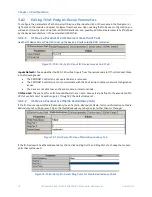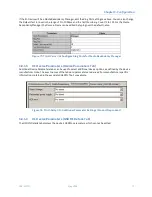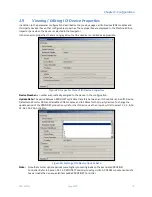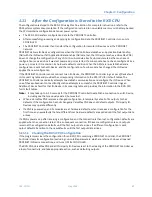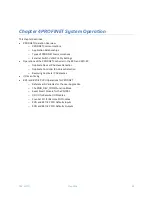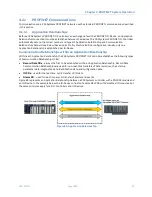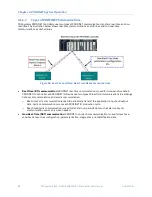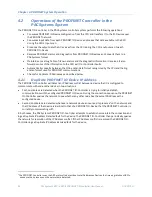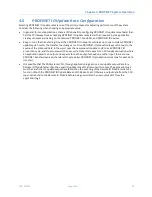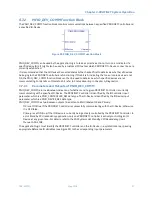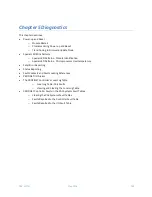
Chapter 4. PROFINET System Operation
86
PACSystems* RX3i & RSTi-EP PROFINET IO-Controller User Manual
GFK-2571N
4.1
PROFINET Operation Overview
An RX3i or RSTi-EP CPU uses PROFINET communications for data exchange between it (as the PROFINET
Controller) and IO-Devices connected on the same PROFINET network and configured to be under its control.
The PROFINET Controller function may be realized by utilizing the embedded PROFINET Controller option in
RX3i CPE400 LAN2 or CPE330 LAN2 or RSTi-EP CPE100/CPE115 LAN2. It may also be realized by installing a
rack-mounted IC695PNC001 in the CPU backplane, where permitted.
In all cases, the port used for PROFINET communications is an Ethernet port. While configured for PROFINET,
the same network may also be used for basic Ethernet communications. However, use of a separate Ethernet
LAN and RX3i Ethernet interface is recommended for most applications.
A PROFINET network can include three types of devices:
PROFINET IO-
Controller
In an RX3i or RSTi-EP system, the CPU operates as an IO-Controller. This may be done via
the embedded PROFINET feature of certain CPUs (refer to Section 1.2.2) or via a rack-
mounted IC695PNC001. It is a controlling device that is associated with one or more
PROFINET IO-Devices.
PROFINET IO-
Device
A PROFINET IO-Device is a distributed I/O Device that is coupled to a PROFINET IO-
Controller via PROFINET.
PROFINET IO-
Supervisor
An IO-Supervisor can be a programming device, a computer, or an HMI device. The
PROFINET IO-Supervisor is typically used for commissioning or diagnostics.





